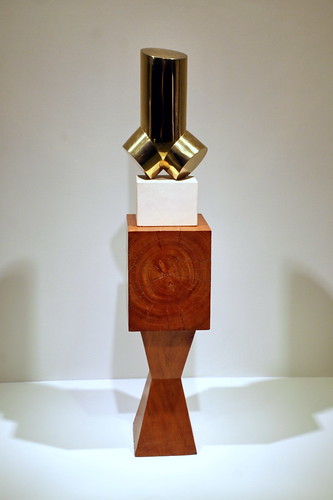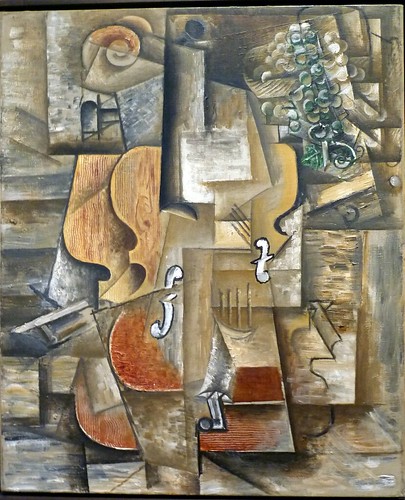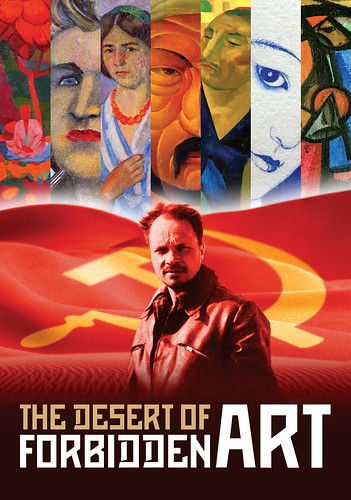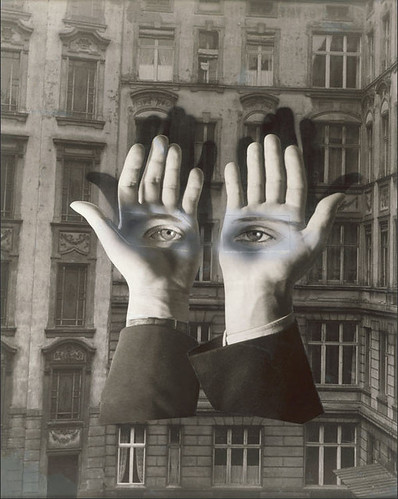The first decades of the 20th century saw a sea change in European politics and culture, while two world wars altered the shape of the continent for ever. To introduce a month of coverage on modern Europe, Mark Mazower examines the complex forces at play during these formative years.
How much really changed in Europe between 1900 and 1945? In some ways, very little. Even after the second world war ended, much of Europe remained rooted in the rhythms of country life, and the car had not yet fully supplanted the horse. Class continued to define the continent's caste system and Europe still ruled much of the world: the British empire was still going strong in 1945, and decolonisation would not gain unstoppable momentum until the 1960s. And yet so much did change in those 45 years – in the realms of politics, ideas and the role of the state – that it is worth projecting ourselves back to 1900 to appreciate the difference.
At the start of the 20th century, European empires not only ruled much of the world, but much of the continent itself, too: family dynasties with medieval lineages held sway from the Arctic Circle to the borders of Sudan, from the Italian Alps to Siberia. Large landed estates from Spain to the Ukraine testified to the durability of both aristocratic and peasant ways.
Domestically, the involvement of the average European state was tiny compared with half a century later. A naval arms race between Germany and Britain worried pacifists, but there were few professional spies, no air forces, and limited state involvement in industrial relations or welfare. Child mortality was high but coming down. Literacy rates were low but rising fast, and public libraries, workingmen's clubs and middle-class scientific societies testified to the vigour of associational life.
Monarchy was the European norm; France was the only republic of any significance. Democracy in the modern sense was thus entirely a 20th-century achievement. In 1900, universal suffrage was unknown. Civilian politicians and domestic public opinion fought for influence over the serious business of making war, which remained in the domain of a tiny upper-class, male, courtly elite – the ambassadors and foreign ministers of great powers – who unashamedly determined the fate of Balkan states, Pacific islands and much of Africa. It was a world that had not yet heard of Bolshevism or fascism – though the inventors of both were already embarked on their careers. Liberalism in the loose sense – with its anticipation of endless progress and its assumption that European norms were the apogee of civilisation – was in the ascendant.
Despite doubts and storm clouds, confidence and stability went wide and deep. Working-class solidarity was a harbinger of future struggles, yet loyalty to king and country still trumped socialist internationalism everywhere when war broke out in 1914. Intellectuals, especially in the central and eastern European empires, hymned their nation's culture and its past glories. But few were pushing for outright independence. In Prague, for instance – then part of the Austro-Hungarian empire – the Young Czech Tomáš Marasyk argued for the use of his language in Habsburg official life rather than the implausible goal of a separate Czech state. Most nationalists still believed, as the Italian activist Giuseppe Mazzini had half a century earlier, that they were on the side of peace and international harmony. Few predicted the bloodshed that took place in the succeeding decades. Nor, despite the common acceptance of racial science and stereotypes, did Europeans anticipate the mass murders, deportation and other crimes that would be committed in the name of racial purity.
What pushed the continent into war in 1914 was not the fragility of social relations, ethnic tensions or grand ideological clashes, but the old-fashioned obsession of some rulers – notably Germany's unstable Kaiser Wilhelm II – with prestige and honour, and a general inability to comprehend that the very character of war had changed. From minor causes great consequences may follow. Once the Habsburg heir, the Archduke Franz Ferdinand, was shot by a young Bosnian Serb in Sarajevo in the summer of 1914, the logic of alliance pushed all of Europe's major states – with the temporary exception of Italy – into action. The crowds cheered, though not for long.
The four years' bloodletting that followed became, as Austrian satirist Karl Kraus apprehended almost immediately, a laboratory for modern destruction. On the western front, an entire generation of young men was mown down. To the east, the front was more fluid, but the war against civilians was far harsher and foreshadowed the atrocities of the second world war. Innocent villagers were hanged in reprisal for partisan raids; entire towns were emptied to serve the labour needs of the military occupiers; hundreds of thousands were forcibly uprooted; and eventually, in Anatolia, there was genocide. Millions died from malnutrition and disease. Millions more found themselves stateless.
And so what the philosopher Immanuel Kant had once wanted outlawed – war without limits – now became reality, and Europe's great powers turned on one another with a venom that made the shared culture of the 19th century a distant memory. Nationalities became a tool of political warfare. The British and French whipped up Poles and Czechs against the central powers. The Germans bankrolled anti-British jihad in north Africa and the Middle East (though the results were disappointing). Kurdish and Armenian bands slaughtered one another in the service of the Ottoman sultan and the Russian tsar. German and British diplomats both made gestures of sympathy for Zionism because they believed in the invisible power of international Jewry.
The losing great powers found that in conjuring the nationalist genie out of the bottle, they had dug their own political graves, and unemployed Habsburg, Romanov and Ottoman princelings soon retreated to the casinos, spas and resorts of Europe. Europe now became a continent of nation-states, and thereby faced for the first time a problem of minorities. At Paris, in 1919, US president Woodrow Wilson was the leading figure: a man with only the haziest prior interest in European affairs, but with an almost godlike sense of his own moral rectitude, he threw his weight behind a peacetime League of Nations, backed the new nation-states and hoped they would make Europe more stable and democratic.
At first the omens looked good. The spread of democracy suited not only Wilson, but the British and French as well: this was the continent remade in their image. In Weimar, Vienna and Prague constitutional lawyers and university professors briefly became the new ruling class. By 1920, parliamentary democracy had become the norm and republics had replaced monarchies, or soon would. Turnouts were high and party memberships soared: the shift to mass politics was irreversible.
But the shift to democracy proved fragile. An early reverse came in Russia in 1917 where liberal constitutionalists were ousted by the October revolution. Bolshevism survived civil war and western intervention, even if Lenin was forced to revise predictions of seeing revolution sweep across the continent. His triumph in Russia brought violent counter-reaction, and the real threat to rule by parliament now emerged from the right: there was an attempted putsch in Berlin, White Terror in Hungary and Bulgaria. Then there was Italy, where an alliance of businessmen, landowners and disaffected nationalist ex-servicemen sponsored the creation of a new kind of rightwing radicalism that swept Benito Mussolini to power with the connivance of more old-fashioned conservatives, and then to unquestioned supremacy. By the late 1920s, fascist Italy was a beacon of a different kind of politics – avowedly anti-Bolshevik, anti-liberal – spearheaded by Mussolini.
Italy was an important model for the radical nationalists of the former central powers. Their version of fascism drew on many of the same elements as Italy's, but added a toxic ingredient not so evident in the Mediterranean: antisemitism. Adolf Hitler was just one – and not initially the most important – of the would-be Mussolinis the Weimar Republic produced. His botched coup effort in Munich in 1923 seemed, for a moment, to end his career. But charismatic oratory and tight control of what became his party allowed him to struggle through the mid-1920s and, with the Wall Street crash of 1929 and the catastrophic onset of mass unemployment in Germany, the Nazi party made rapid electoral strides and propelled him to power in 1933.
The economic dislocation of the interwar years was probably the basic reason why democratic politics failed. The war had fuelled state indebtedness, and official efforts to regain creditworthiness often made matters worse. The continent veered between occasional bouts of hyperinflation and the steady downward pressure on prices caused by efforts to restore the old 19th-century gold standard. Demand was forced downwards and unemployment rose. Even before the instability in the US hit the European banking system, another recessionary influence was evident – plummeting world commodity prices. Grain was particularly affected, and millions of European peasants faced mounting debt. Across much of central and eastern Europe, large estates had been broken up after 1918 by new democratic politicians anxious to appease their peasantries and deflect them from Bolshevism. Good bourgeois politics now made bad credit risks and the economic health of at least half of Europe was affected.
Meanwhile, Bolshevism, which had struggled through the 1920s, was emerging in the 1930s as a potent alternative model to capitalism for economically backward nations. In the course of a bitter power struggle after Lenin's death, Joseph Stalin emerged as the USSR's unquestioned leader. In 1931, he made an accurate prediction: Bolsheviks had only a decade to turn their country into a major power before war came and threatened the revolution. This geopolitical pessimism drove every aspect of his domestic policy. It explains why he insisted on forced industrialisation, even when the collectivisation of the land and the grain requisitions that accompanied this led millions to starve.
Thanks to sympathetic foreign commentators, what most Europeans saw was not the famine, nor the gulag camps, nor the hundreds of thousands shot in the Terror, but rather the disappearance of unemployment, the emergence of entire new cities in the Steppe, soaring steel production and the wonders of the Moscow metro.
By the mid-1930s, the common culture that Europe's elite had shared only two decades earlier had become irrelevant. Liberal certainties had dissolved in every realm: classical economics was under threat from the theories of Maynard Keynes and other supporters of managed capitalism. Surrealism in art reflected the rise of psychoanalysis and a new respect for the power of the irrational. In music, the late romanticism of Bruckner and Mahler had given way to the atonalities of the second Vienna school. Even in detective fiction, the Victorian rationalism of Sherlock Holmes was replaced by the seedy, shifting, mercenary world in which Eric Ambler's decent but hapless heroes found themselves adrift.
Right and left fought in the streets of Berlin and the battlefields of Spain; politics was now a competition to the death between sharply contrasted visions of social and political order. Liberal parliamentarism was weakened, it seemed mortally, by the failure of the League of Nations to guarantee peace, and undermined morally by a series of shoddy compromises made by the British and French at the expense of Czechs, Ethiopians and others. Shut away behind tightly guarded borders was the Soviet Union, preparing for the showdown with capitalism. And newly ascendant in the heart of the continent was the Third Reich, which within five years of its establishment overshadowed its fascist ally across the Alps, and attracted nationalists all over the continent to the seeming dynamism of dictatorship. From Latvia to Greece, the states of eastern Europe slid towards one-man rule and gave up on the League, the French and the British. At the 1937 Paris World Fair, where the Spanish pavilion featured Picasso's Guernica, what people first noticed was the Nazi eagle and the Soviet hammer and sickle squaring off atop their respective pavilions across the fountains of the main ceremonial avenue. The Eiffel Tower in the distance between them already looked like a monument to yesterday's values.
The new German vision
The Nazi effort to remake Europe took barely a decade from start to cataclysmic finish. It started fairly peacefully in the mid-1930s, when the Reich brought much of central and eastern Europe into its orbit by the simple expedient of bartering its own exports for goods instead of insisting on payment in gold, like the British and French. The new German vision of stability depended not on the spread of international law but on troops and police, racial politics and the threat of overpowering force. The real start of the war was therefore not the invasion of Poland, bloody though that was, but the Anschluss with Austria in the spring of 1938. It was this that first revealed the Nazis' goal of creating a "Greater Germany" that could dominate the continent, and with it the emergence of an organised policy of getting rid of Jews.
The war started out over Poland, but soon became a struggle to control central Europe and then the continent as a whole. The purpose was to expand Germany far to the east, by killing or expelling most non-Germans and then constructing a new colonial empire in the former Soviet borderlands. This new Germany would eliminate Bolshevism and leave Russians as an irritant on the far side of the Urals. At the same time, France would be neutralised and Italy bought off with bits of Balkan and African real estate. Europe would be pacified by the elimination of minorities, mostly through population swaps. What would be left would be a system of impotent nation-states, satellites revolving around the Third Reich. Britain, Hitler hoped, would forget about Europe and focus on ruling the Raj.
As for the Holocaust, which is the aspect of this over-arching vision that we are most familiar with today, there was no grand continental scheme before 1942 at the very earliest. There was expertise – thanks to the sinister officials already responsible for the gassing of thousands of the mentally ill in Germany. There was the experience gained in the mass shootings of Soviet Jews (and starving of millions of Soviet captives) after the invasion of the Soviet Union in the summer of 1941. And there was the emergence of systematic killing camps in Poland in 1942. The development of a continent-wide killing plan, utilising the huge labour camp at Auschwitz and its new lethal annexes, arose last of all. Beyond this, SS blueprints sketched out the vision of a massive, decades-long deportation after the war of tens of millions of Czechs and Poles to certain death in the Arctic wastes of northern Russia. The killing of Jews was just the start.
The war was therefore fundamentally a German effort to remake Europe in the image of a fascist future and to consign both democracy and Bolshevism to the past. There was some resistance but this was not why the effort failed. Most people on the continent came quickly to dislike Nazi rule, but relatively few were able to do much about it. Armed resistance was morally inspiring but militarily it did not trouble the Germans much outside Yugoslavia and the Soviet borderlands, not at least until the tide of war had turned.
The real reason for the Nazi failure lay in the global balance of forces. Hitler had vastly overestimated Germany's own might and refused to do what he could have done to garner European support for his cause. Badly underestimating the Soviet capacity to resist, he also failed to comprehend the importance of Middle Eastern oil. Underestimating the resilience of the American economy, borne out of depression by war spending, he failed to anticipate the costs to the Reich of sustained aerial bombardment and naval inferiority. By 1942, Germany was running low on food, by 1944 on manpower. Europe alone, even united, could probably not have withstood the combined global resources of the US, the USSR and the British empire. Germany alone in Europe could do even less.
But resources were not the whole story; human courage and resilience played a role, too. The epic struggle between Nazism and Bolshevism could easily have gone the other way, especially in the winter of 1941 when German guns could be heard in Moscow. The Soviet front was where the overwhelming majority of the war's military and civilian casualties accumulated, where the fighting was most brutal and the ideological stakes highest. Badly burned by its defeat in 1940, the British army stayed across the Channel until the Americans were ready. Meantime, the Russians resisted the German forces and fought back. The tide turned at Stalingrad in the winter of 1942-43, but it was not until the Red Army suddenly swept all before it in the summer of 1944, that it became obvious who would hold the new power in eastern Europe. From this point on, Germany's defeat was a matter of time. Winston Churchill rushed to Moscow and suggested to Stalin that the best way to avoid misunderstandings was to agree on separate spheres of influence. Stalin, it turned out, felt the same way.
Separate spheres of influence were indeed established – the Russians eventually getting most of eastern Europe, the Anglo-Americans western Europe, Greece and the Mediterranean – but this did not prevent misunderstandings emerging. In 1945, Churchill was already planning for a possible war with the USSR, while Stalin was hoping for a breathing space of 15 to 20 years before the next showdown with the capitalist west. The one thing uniting them was fear of Germany. How to prevent a Fourth Reich became the central issue of the cold war: it was what divided the two sides from 1945 onwards, but it was also what kept them together.
Here was the greatest change of all. When the century had opened, European states and values ran the international system. Now, under the thumb of two superpowers, after having bankrupted and bled itself dry in two devastating wars, Europe was no longer the arbiter of the world's destiny: it had itself become an object. Was this perhaps why so much talk about Europe – as an idea, as a serious political project – started only now, at the very moment that Europe in the old sense ceased to exist? The end of the European era was the beginning of the road to the European Union.
Mark Mazower, professor of history at Columbia University. 
Traducere // Translate
New Europe: Continental drift
Abonați-vă la:
Postare comentarii (Atom)

Niciun comentariu:
Trimiteți un comentariu